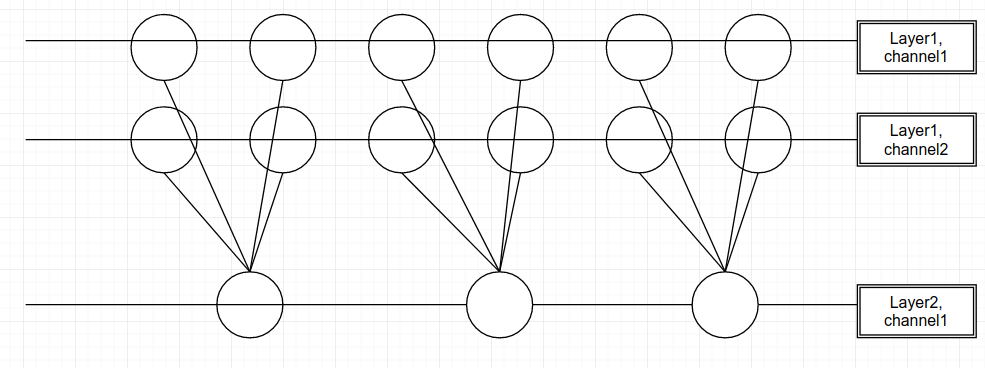IF FORMULAS ARE NOT DISPLAYED CORRECTLY, PLEASE ALLOW UNSECURE(HTTP) CROSS SITE SCRIPTS
What are the Harmonic Series?
From Wikipedia, Haronmic Series)
In mathematics, the harmonic series is the divergent infinite series: Its name derives from the concept of overtones, or harmonics in music: the wavelengths of the overtones of a vibrating string are $1/2, 1/3, 1/4$, etc., of the string’s fundamental wavelength. Every term of the series after the first is the harmonic mean of the neighboring terms; the phrase harmonic mean likewise derives from music.
It is basically a series defined like this:
$$
\sum_{x=1}^{\infty} \frac{1}{x} = \frac{1}{1} + \frac{1}{2} + \frac{1}{3} + \ldots + \frac{1}{\infty}
$$
and it feels, intuitively, to be converging. However, it’s actually the opposite.
Why are they diverging?
Mathematical Perspective
There are multiple ways to think about it and I find the following the easiest to understand.
- Use $f(x)=\frac{1}{x}$ to regress the series and take an infinite integral:
$$
\int_{1}^{\infty} f(x) dx = ln(x)
$$
- From the above, if we are taking a finite integral
$$
ln(x)|_{1}^{\infty} = \infty
$$
, we can see that the result diverges into infinity.
Intuitive Understanding
Even if the fact that this series is diverging seems to be mathematically correct, it’s really weird to think about it. Here’s an intuitive way of thinking it.
For any infinite series, think of is as doing two things together:
- The fact it’s “infinite” is trying to push the sum of it into $\infty$, in another word, divergence.
- The fact that there is an altered term in every new sum added, is trying to push the sum into a finite value by making the newly generated value as small as possible, thus converging.
And here we have a race between the two forces and by comparing the speed of change the two forces create, we know what’s the result.
Let’s look at a similar series, that looks a lot alike to our series but actually converges.
$$
\sum_{x=1}^{\infty} \frac{1}{x^n} = \frac{1}{1^n} + \frac{1}{2^n} + \frac{1}{3^n} + \ldots + \frac{1}{\infty^n}
$$
The $n$ here is the key and in the Harmonic Series it equals 1. At here, let’s use $n=2$ as an example to create our new series.
$$
\sum_{x=1}^{\infty} \frac{1}{x^2} = \frac{1}{1^2} + \frac{1}{2^2} + \frac{1}{3^2} + \ldots + \frac{1}{\infty^2}
$$
Over the course of adding the first term to the $\infty^{st}$ term, looking at the first force, we have a course of:
- 1 -> $\infty$ with step length of 1
(Adding one more term each iteration)
Over the course of adding the first term to the $\infty^{st}$ term, looking at the second force, we have a course of:
- 1 -> $\infty$ with step length of $\frac{1}{x^2-(x-1)^2}$, which proved to be $\frac{1}{step_{x-1}+2}$.
(Since we are comparing the force of shrinking a value, we can ignore the upper part of the fraction, which makes the step ${step_{x-1}+2}$)
For example, the steps between term_1, 2, 3, 4 are 3, 5 and 7.
This way, we can compare the first force with the second:
$$
\frac{1}{step_{x-1}+2} < 0
$$
which means in all steps the speed convergence of this series is larger than the speed of divergence, which makes its overall behavior convergence.
Let’s look at another example series where n=0.5:
$$
\sum_{x=1}^{\infty} \frac{1}{x^{0.5}} = \frac{1}{1^{0.5}} + \frac{1}{2^{0.5}} + \frac{1}{3^{0.5}} + \ldots + \frac{1}{\infty^{0.5}}
$$
(The steps between term_1, 2, 3, 4 are 0.4, 0.3 and 0.25.)
And compare the two forces of it:
$$
\frac{1}{(x^{0.5}-(x-1)^{0.5})^2} > 0
$$
which means in all steps the speed convergence of this series is smaller than the speed of divergence, which makes its overall behavior divergence.
Finally, time to deal with our n=1 series. We surprisingly found that the speed of divergence is equal to the speed of convergence, which make it lies at the critical area that yet to be defined.
However, we know that a series have to be either converges or diverges. Think of it like this: a man chasing another man holding a finish line, both of them are at the same speed. The fact that they are chasing each other makes sure the finish line is ahead of the man. This way, the man never gets to the finish line, thus making the final pattern diverges.
To draw a conclusion:
$$
\sum_{x=1}^{\infty} \frac{1}{x^n}$$ Converges only if $n>0$
Extending the question
From the above we can tell that the Harmonic Series indeed diverges, but at the critical speed where any tiny change in its speed of divergence/convergence could knock it into another side. What about we try to give it a knock?
These problem has already been discussed and the modified series are called Depleted Harmonic Series.
It’s easy to conclude that changes like pulling away all the recipicals of odd numbers will cause this series to converge.
Prime Numbers?
What about pulling away all the recipicals of prime numbers? I heard from a guy on a forum that it still diverges, but I haven’t read any proves.
This sounds really anti-intuitive because we are excluding an infinite series out of another infinite series(Really? Not proved yet…) where its divergence speed is too low that any reduction will cause it to converge.
There is yet another possible way of thinking this.
Due to the unknowns of prime numbers, I will replace them with “any series that gets sparser as it grows”. We know that making a series of all the terms pulled out, this new series actually converges. So we are excluding a finite value out of infinite, which still, equals infinite.
I can almost immidiently feel that a lot of my logics are really sloppy, please point out if anything is wrong.
2017/10/17
Update: ok… my understanding seems to be a bit off. It’s still possible to extract a divergent series out of it to make it still diverges…
2017/10/19




